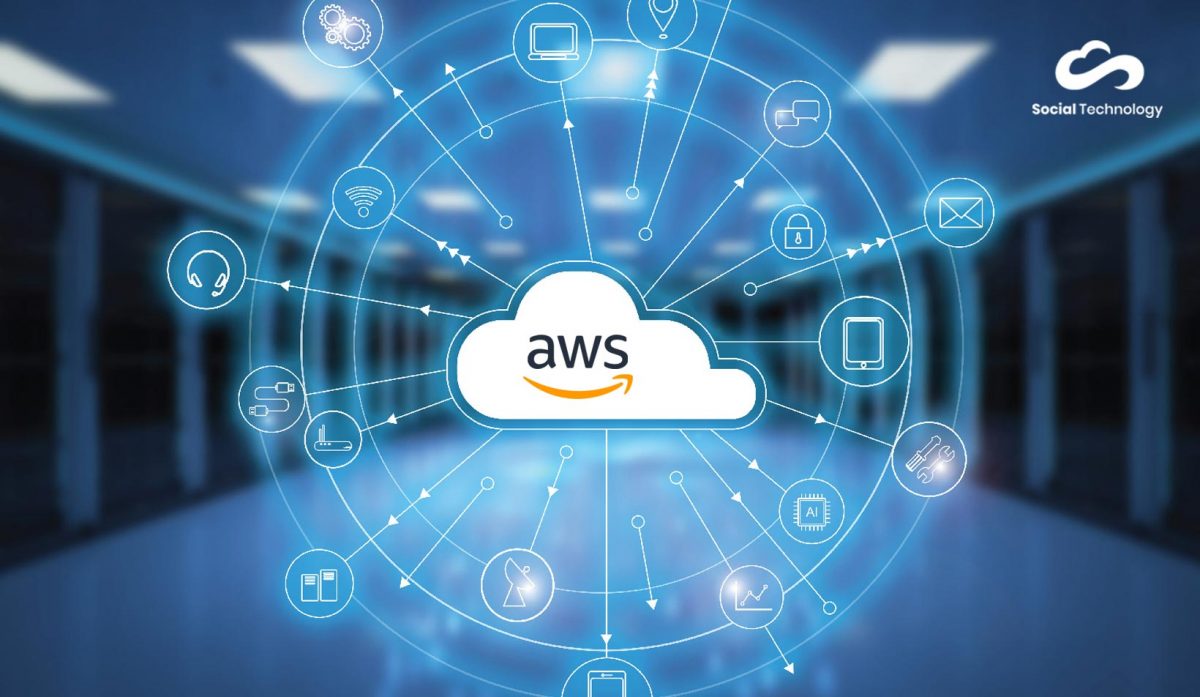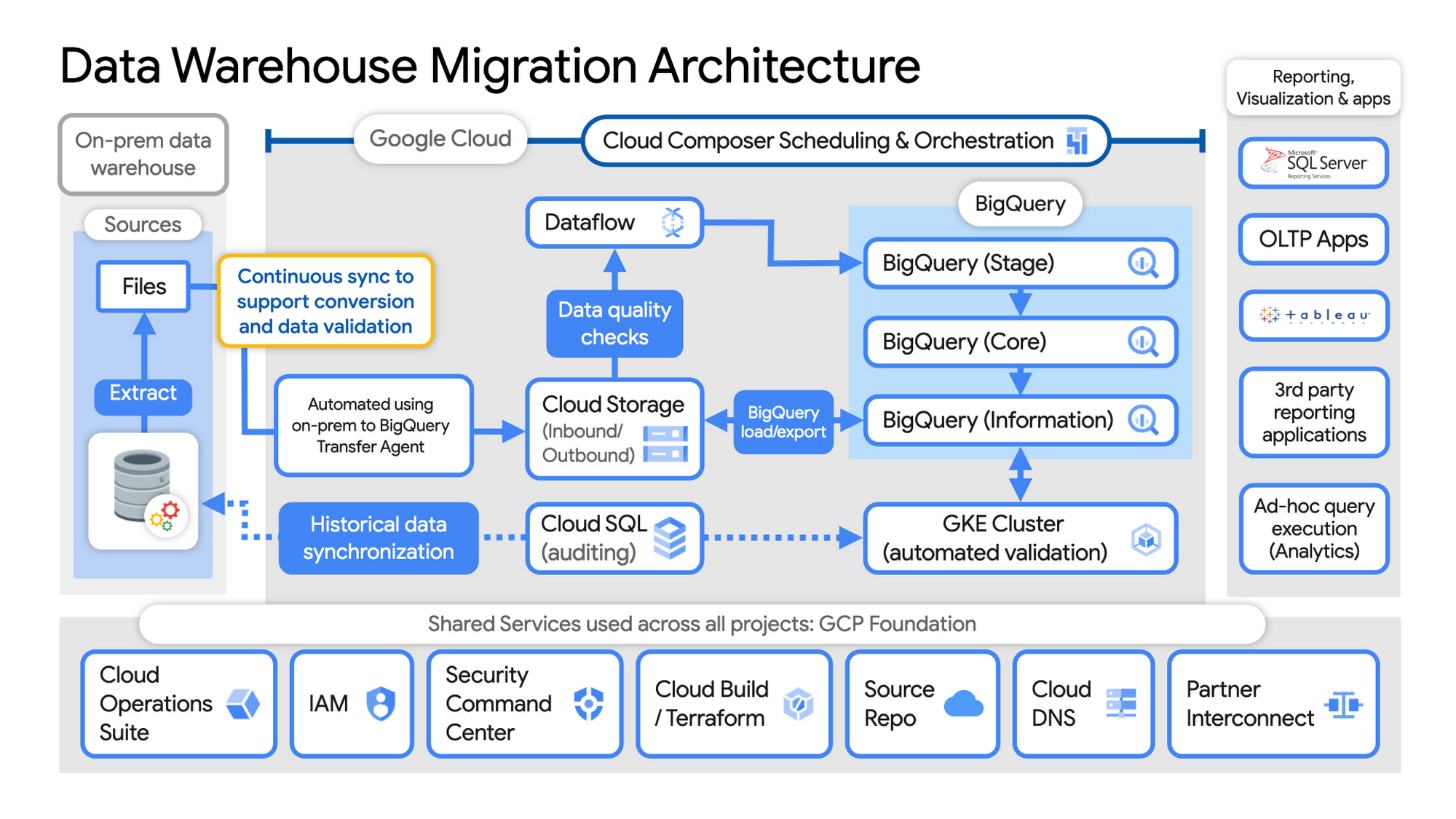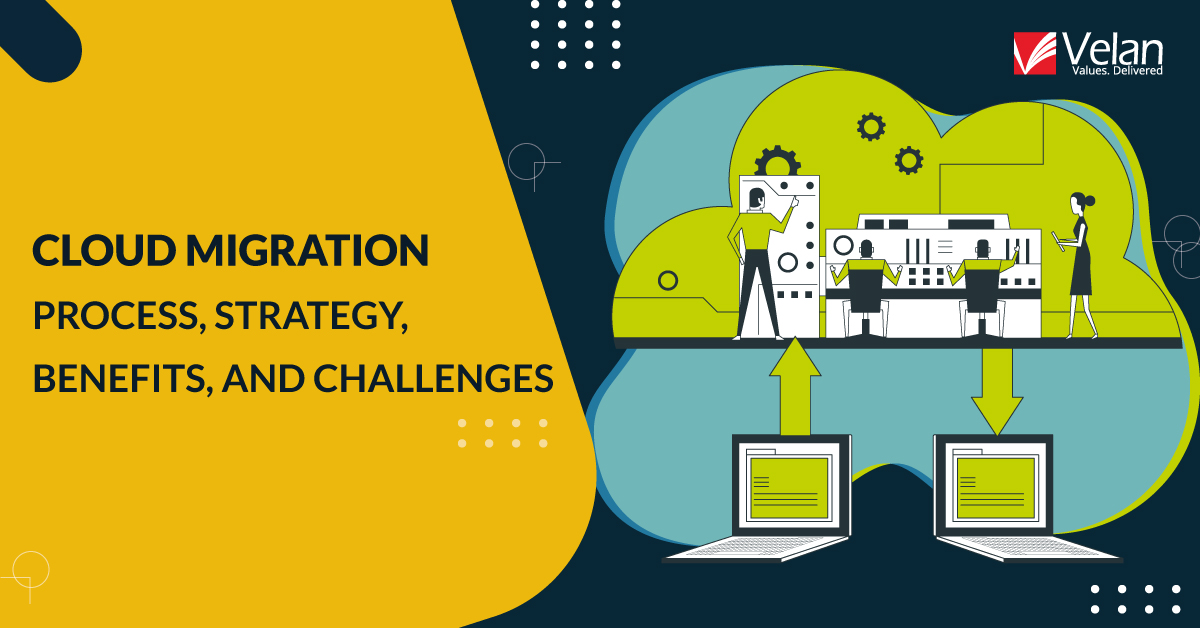Understanding Migration and Integration in Cloud Environments
Migration and integration in cloud architectures refer to the processes of moving digital assets, applications, and data from on-premises or legacy systems to cloud-based infrastructures and ensuring seamless interaction between various cloud services and existing systems. A smooth transition and integration process is crucial for organizations to leverage the full potential of cloud computing, including scalability, flexibility, and cost savings.

Key Factors to Consider for Migration and Integration
When planning migration and integration in cloud environments, organizations must consider several key factors to ensure a successful transition and seamless integration with existing systems. These factors include data security, compatibility, and minimizing downtime.
Data Security
Data security is paramount during migration and integration processes. Organizations must ensure that sensitive data is protected throughout the transition and that appropriate security measures are in place in the target cloud environment. Implementing encryption, multi-factor authentication, and access controls can help maintain data security during migration and integration.
Compatibility
Compatibility between the source and target systems is another critical factor to consider. Ensuring that applications and data can function correctly in the new cloud environment requires thorough testing and validation. Addressing compatibility issues early in the process can help prevent disruptions and ensure a smooth transition.
Downtime Minimization
Minimizing downtime during migration and integration is essential for maintaining business continuity and minimizing the impact on users and customers. Adopting a phased approach, where services are gradually migrated and integrated, can help reduce downtime and mitigate risks. Additionally, scheduling migrations during off-peak hours can further minimize disruptions.

Top Strategies for Migration and Integration in Cloud Architectures
Adopting effective strategies is crucial for successful migration and integration in cloud environments. Here are some of the most successful approaches:
Using Cloud-Native Tools
Cloud-native tools, such as AWS Lambda, Google Cloud Functions, and Azure Functions, can simplify migration and integration by allowing organizations to develop and deploy applications directly in the cloud. These tools offer scalability, flexibility, and seamless integration with other cloud services.
Adopting a Phased Approach
A phased approach to migration and integration enables organizations to gradually move services and applications to the cloud, minimizing disruptions and downtime. By prioritizing critical applications and services, organizations can ensure a smooth transition and maintain business continuity.
Thorough Testing
Rigorous testing is essential for ensuring compatibility and identifying potential issues before migration and integration. Thorough testing can help prevent disruptions, minimize downtime, and ensure a seamless transition to the cloud.
Establishing a Clear Migration and Integration Plan
A well-defined migration and integration plan is crucial for success. This plan should outline the scope of the project, identify key stakeholders, establish timelines, and define success criteria. A clear plan helps ensure that all team members are aligned and working towards the same goals.
Collaborating with Experienced Cloud Service Providers
Partnering with experienced cloud service providers can help organizations navigate the complexities of migration and integration. These providers can offer expert guidance, best practices, and resources to ensure a successful transition to the cloud.

Popular Cloud Migration and Integration Tools
Selecting the right tools is crucial for successful migration and integration in cloud environments. Here are some popular options:
AWS Server Migration Service
AWS Server Migration Service is a free tool that enables organizations to migrate on-premises workloads to AWS. It allows users to automate, schedule, and track server migrations, reducing the complexity and risk associated with migration projects.
Google Cloud Migrate
Google Cloud Migrate is a service that helps organizations migrate virtual machines, databases, and other workloads to Google Cloud. It offers automated assessments, migration planning, and execution, ensuring a smooth transition to the cloud.
Azure Migrate
Azure Migrate is a service that helps organizations assess and migrate workloads to Microsoft Azure. It offers discovery, assessment, and migration of virtual machines, databases, and web applications, ensuring a seamless transition to the cloud.
CloudEndure Migration
CloudEndure Migration is a service that enables organizations to migrate workloads to the cloud with minimal downtime and disruption. It offers automated conversion of source machines to cloud-based target machines, ensuring a smooth transition to the cloud.
RapidMigrate
RapidMigrate is a service that helps organizations migrate databases, applications, and workloads to the cloud. It offers automated discovery, assessment, and migration, ensuring a seamless transition to the cloud.
Turbonomic
Turbonomic is a hybrid cloud management platform that helps organizations manage and optimize their cloud environments. It offers automated workload placement, resource optimization, and performance management, ensuring a seamless migration and integration experience.
How to Overcome Common Challenges in Migration and Integration
Migration and integration in cloud architectures can be complex, and organizations often face various challenges. Here are some common challenges and practical solutions to ensure a successful transition:
Data Security
Challenge: Ensuring data security during migration and integration is crucial. Organizations must protect sensitive data from unauthorized access, breaches, and leaks.
Solution: Implement robust security measures, such as encryption, access controls, and multi-factor authentication. Regularly monitor and assess security protocols to ensure they meet industry standards and regulations.
Compatibility
Challenge: Ensuring compatibility between on-premises systems and cloud environments can be challenging. Organizations may face issues with software, hardware, and network compatibility.
Solution: Conduct thorough compatibility assessments before migration. Use cloud-native tools and virtualization technologies to ensure compatibility and minimize disruptions.
Downtime Minimization
Challenge: Minimizing downtime during migration and integration is essential to maintain business continuity and avoid loss of productivity.
Solution: Adopt a phased approach to migration and integration, allowing for gradual cutover and minimizing downtime. Use automated tools and processes to reduce manual intervention and potential errors.
Application Performance
Challenge: Ensuring application performance in cloud environments can be challenging due to network latency, bandwidth limitations, and other factors.
Solution: Optimize network configurations, use content delivery networks (CDNs), and implement load balancing to ensure optimal application performance in cloud environments.
Cost Management
Challenge: Cost management can be challenging in cloud environments due to the complexity of pricing models and the risk of overprovisioning resources.
Solution: Implement cost management strategies, such as resource optimization, budgeting, and monitoring. Use cloud cost management tools to track and control expenses.
Real-World Success Stories: Migration and Integration in Action
Migration and integration in cloud architectures can deliver significant benefits to organizations, including cost savings, increased agility, and improved scalability. Here are some real-world success stories that highlight the benefits and ROI achieved by organizations:
Global Manufacturing Company
Challenge: A global manufacturing company sought to modernize its IT infrastructure and reduce costs by migrating to the cloud. The company had numerous legacy applications and data centers worldwide.
Solution: The company adopted a phased migration approach, using cloud-native tools and automated processes to migrate applications and data to the cloud. The company also implemented a multi-cloud strategy, using AWS and Azure to ensure redundancy and minimize downtime.
Result: The company achieved a 40% reduction in IT costs, improved application performance, and increased agility. The company also gained the ability to scale its IT infrastructure up or down based on demand.
Healthcare Provider
Challenge: A healthcare provider sought to modernize its IT infrastructure and improve data security by migrating to the cloud. The company had numerous sensitive patient records and regulatory compliance requirements.
Solution: The company used Google Cloud Migrate to migrate applications and data to the cloud. The company also implemented robust security measures, such as encryption, access controls, and multi-factor authentication.
Result: The company achieved a 30% reduction in IT costs, improved data security, and regulatory compliance. The company also gained the ability to analyze patient data in real-time, improving patient outcomes and care.
Retail Company
Challenge: A retail company sought to improve its e-commerce platform and increase scalability by migrating to the cloud. The company had a high volume of online traffic and transactions during peak seasons.
Solution: The company used AWS Server Migration Service to migrate applications and data to the cloud. The company also implemented load balancing and auto-scaling to ensure optimal application performance during peak seasons.
Result: The company achieved a 50% reduction in IT costs, improved e-commerce platform performance, and increased scalability. The company also gained the ability to handle high volumes of online traffic and transactions during peak seasons.

Monitoring and Optimizing Cloud Architectures Post-Migration
Migration and integration in cloud architectures are critical components of a successful cloud strategy. However, the work does not stop once the migration and integration processes are complete. Ongoing monitoring and optimization are essential to ensure long-term success and maximize the benefits of cloud architectures.
The Importance of Monitoring
Monitoring is crucial to ensure that cloud architectures are performing optimally and meeting business objectives. Monitoring can help identify issues before they become critical, prevent downtime, and ensure that applications and services are available when needed. Monitoring can also help organizations optimize their cloud architectures, improve performance, and reduce costs.
Tools and Techniques for Monitoring
There are numerous tools and techniques available for monitoring cloud architectures. These include cloud-native monitoring tools, such as AWS CloudWatch, Azure Monitor, and Google Cloud Monitoring. These tools can provide real-time insights into the performance and health of cloud architectures, including metrics such as CPU usage, memory consumption, and network traffic.
In addition to cloud-native monitoring tools, there are also third-party monitoring tools available, such as Nagios, Zabbix, and Datadog. These tools can provide additional features and functionality, such as custom dashboards, alerts, and reporting.
Optimizing Cloud Architectures
Optimization is an ongoing process that involves continuously evaluating and improving cloud architectures. Optimization can help organizations reduce costs, improve performance, and enhance security. Optimization techniques include rightsizing, which involves selecting the right instance type and size for applications and services, and cost optimization, which involves identifying and eliminating unnecessary costs.
Other optimization techniques include load balancing, which involves distributing traffic across multiple instances or servers to improve performance and availability, and auto-scaling, which involves automatically adding or removing instances or servers based on demand.
Best Practices for Monitoring and Optimization
To ensure long-term success, organizations should follow best practices for monitoring and optimization. These include setting up alerts and notifications for critical issues, regularly reviewing performance metrics, and implementing a continuous improvement process. Organizations should also consider implementing a DevOps approach, which involves collaboration between development and operations teams to improve the speed and quality of software delivery.

Future Trends and Predictions for Cloud Migration and Integration
Cloud migration and integration have become essential components of modern IT strategies. As organizations continue to adopt cloud technologies, migration and integration will continue to evolve, with new trends and predictions emerging. In this article, we will look ahead to the future of cloud migration and integration and discuss emerging trends and make predictions about the evolution of cloud architectures.
Hybrid and Multi-Cloud Environments
Hybrid and multi-cloud environments are becoming increasingly popular as organizations seek to leverage the benefits of multiple cloud providers and on-premises infrastructure. According to a recent survey by Gartner, by 2024, over 75% of midsize and large organizations will have adopted a multi-cloud strategy. As a result, migration and integration will need to become more sophisticated, with tools and strategies that can handle complex hybrid and multi-cloud environments.
Artificial Intelligence and Machine Learning
Artificial intelligence (AI) and machine learning (ML) are becoming increasingly important in cloud migration and integration. AI and ML can help automate complex tasks, such as data migration and application integration, and can provide real-time insights into cloud architectures. According to a recent report by MarketsandMarkets, the AI in the cloud market is expected to grow from $6.6 billion in 2020 to $27.8 billion by 2025, at a compound annual growth rate (CAGR) of 34.4% during the forecast period.
Serverless Architectures
Serverless architectures are becoming increasingly popular as organizations seek to reduce costs and improve scalability. Serverless architectures allow organizations to build and run applications without having to manage servers or infrastructure. According to a recent report by Grand View Research, the global serverless architecture market size was valued at $7.1 billion in 2020 and is expected to grow at a compound annual growth rate (CAGR) of 22.6% from 2021 to 2028.
Security and Compliance
Security and compliance will continue to be critical factors in cloud migration and integration. As organizations move more data and applications to the cloud, they will need to ensure that they are complying with regulations such as GDPR, HIPAA, and PCI-DSS. According to a recent report by Cybersecurity Ventures, cybercrime is expected to cost the world $10.5 trillion annually by 2025, up from $3 trillion in 2015. As a result, organizations will need to invest in robust security and compliance measures to protect their cloud architectures.
Conclusion
Cloud migration and integration are constantly evolving, with new trends and predictions emerging. Hybrid and multi-cloud environments, AI and ML, serverless architectures, and security and compliance will all play a critical role in the future of cloud migration and integration. By staying up-to-date with these trends and investing in the right tools and strategies, organizations can ensure long-term success in their cloud journeys.

